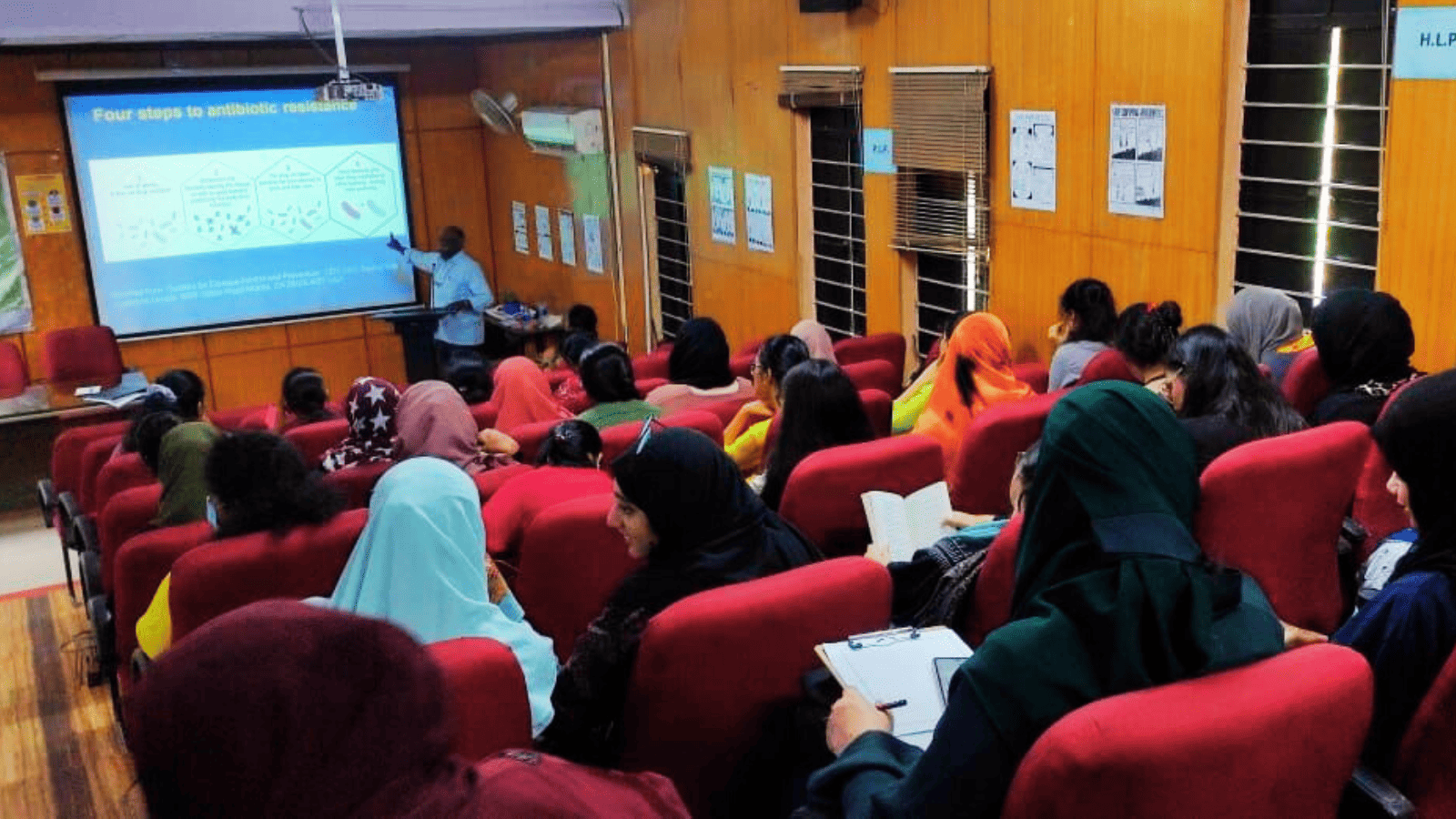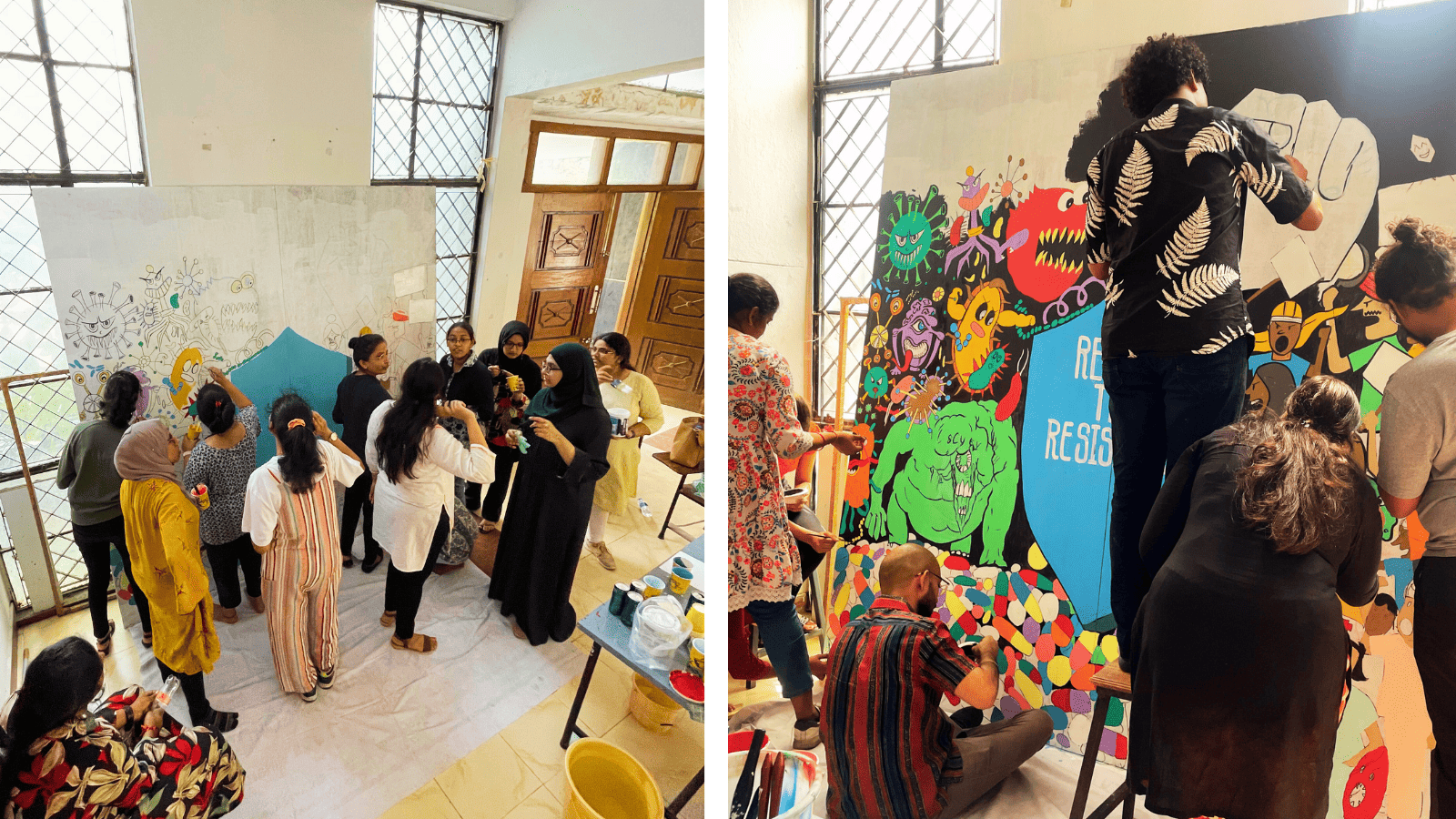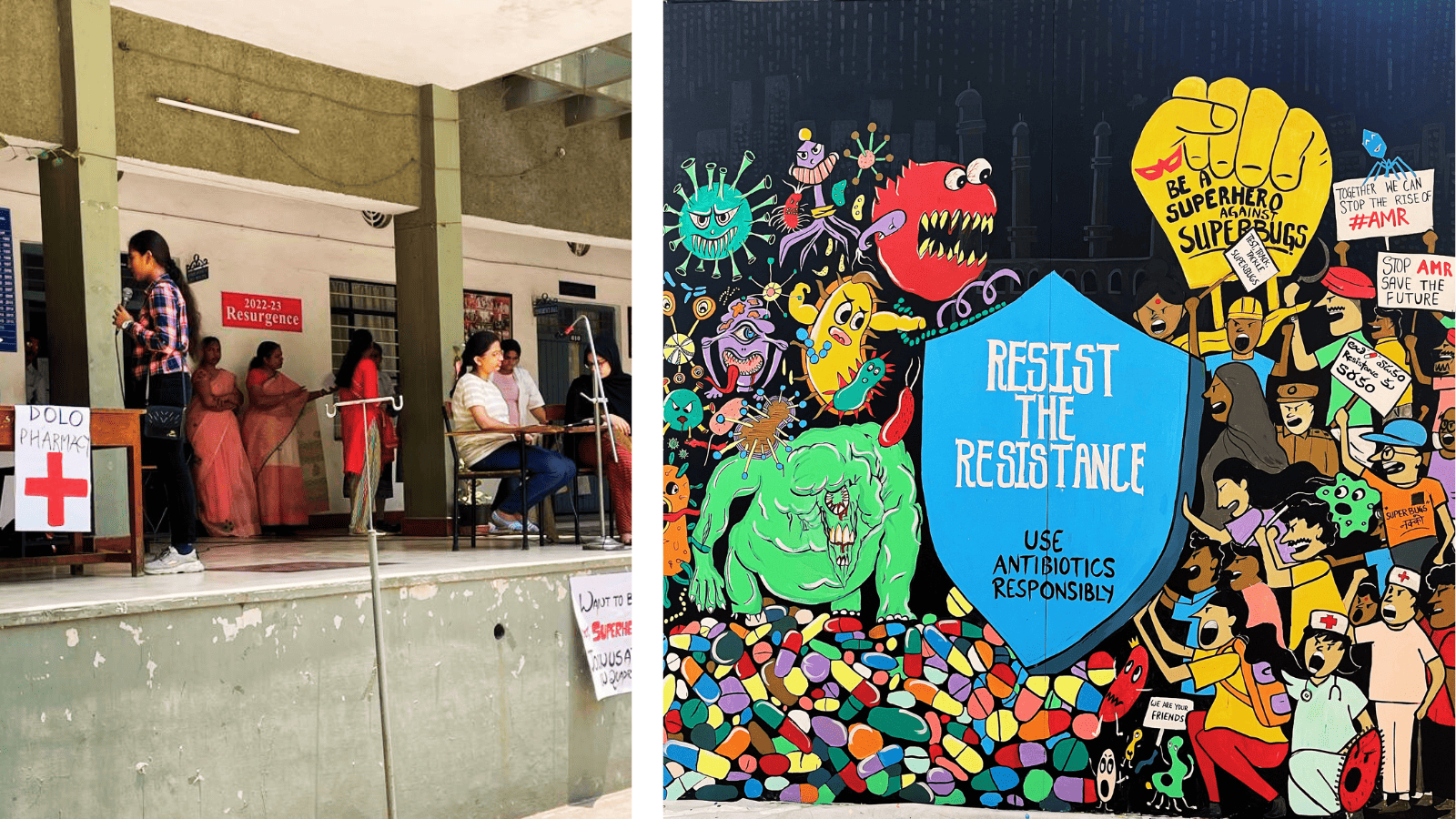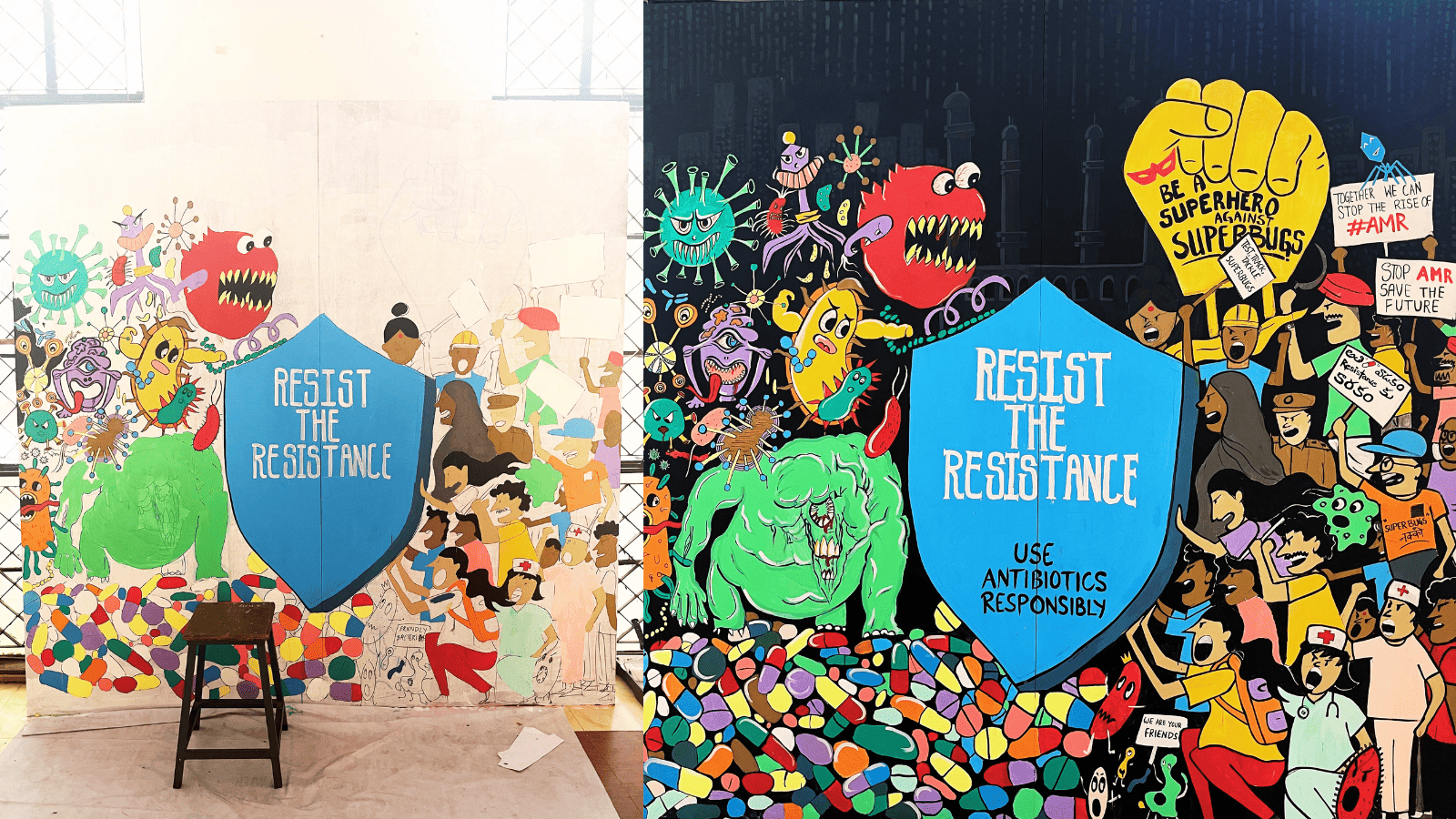The Brushes Against Superbugs event at St. Ann’s College, Hyderabad, was a significant milestone, not only launching the Alliance for Pathogen Surveillance in India (APSI) project but also highlighting SaS’s innovative use of street art to raise awareness about Antimicrobial Resistance (AMR). Spanning two vibrant days on April 24th and 25th, 2023, the event masterfully combined art, education, and dialogue, engaging over 150 enthusiastic young participants.

The first day of the Brushes Against Superbugs event began with an informative talk by Dr. Sisinthy Shivaji, LVPEI, Hyderabad. He discussed topics such as AMR surveillance, the historical development of AMR, and the intriguing role of AMR in eye infections, highlighting the multifaceted and complex nature of this critical issue.
The highlight of the day was the creation of a collaborative 8×8 feet mural. First-year life sciences students from St. Ann’s College joined forces with young artist Dibyush Jena from Odisha, working on a design they had co-designed before this event. This mural painting became a vivid and creative expression of the complex interplay between antibiotics, superbugs, and public health.

Alongside the mural painting, day one of the event also featured dynamic interactions between students and the SaS team, where participants began crafting a play titled The Invisible War. This part of the programme allowed students to dispel misconceptions and grasp the real-world implications of AMR.
On day two, students continued their work on the mural and put the finishing touches on their play. The performance of The Invisible War set a powerful prelude to the mural’s unveiling. Both the play and the mural showcased the transformative power of participatory arts in making complex public health issues like AMR more accessible and understandable.

The event wrapped up with the engaging “Bug Busters” quiz, conducted in a lively jeopardy style, which showcased the students’ knowledge while fostering a collaborative learning environment.
The AMR mural has since taken on a life of its own, becoming a powerful symbol for AMR awareness. Traveling across the city to various hotspots, including public spaces, educational institutes, and hospitals, the mural serves as a visually arresting backdrop that not only sparks dialogue but also sets the stage for additional events. Its prominent presence is transforming it into an impactful tool for raising awareness, engaging more people with this crucial issue, and inspiring ongoing conversations about AMR.
